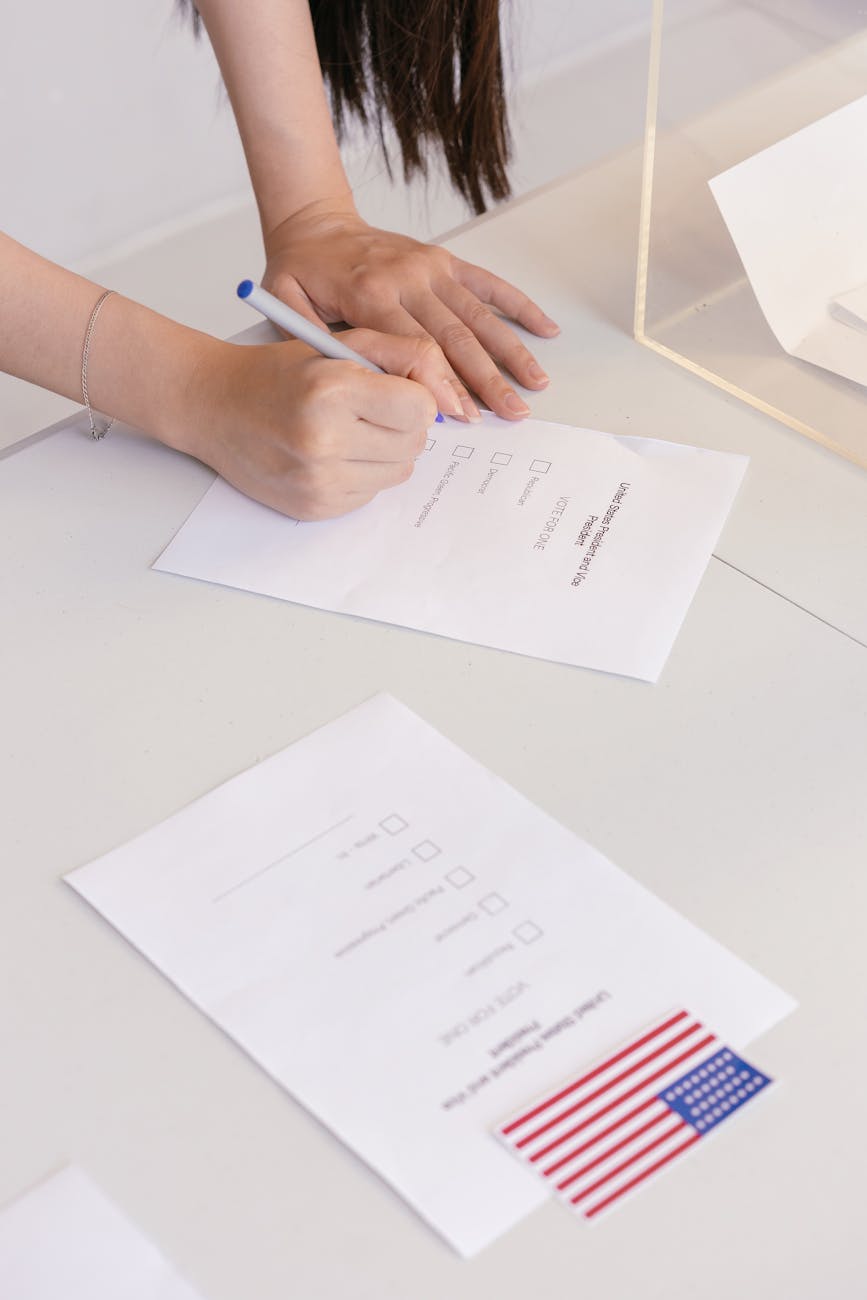Seize the Moment: Crucial Factors Influencing Decision Making
Understanding Decision-Making Influences
Impact of Mental Shortcuts
Alright, let’s chat about what messes with our decision-making. There’s these sneakily influential mental shortcuts we call heuristics. They’re kinda like the autopilot for our brains, helping us dodge complex info so we don’t burn out over what toothpaste to buy. Thanks to smart folks like Amos Tversky and Daniel Kahneman, we know they can sometimes steer us wrong. Especially when the stakes are high in business (Verywell Mind).
Take the availability heuristic for example. It’s bad habit of ours where we tend to lean on the juiciest or latest bit of info we’ve seen, even if it’s just something flashy in the news. It might make us think skydiving is as dangerous as juggling knives, when actually, it’s not.
| Heuristic Type | Description | Example |
|---|---|---|
| Availability | Decisions based on readily available info | Pumping up a new startup because it’s all over Instagram |
| Anchoring and Adjustment | Sticking too much to initial numbers or ideas | Arguing salary from the first number tossed around |
| Representativeness | Basing likelihood on how much something matches a stereotype | Thinking the guy with glasses and a book is the next Einstein |
Grasping these mental shortcuts gives business bigwigs a fighting chance to keep their wits about them when decisions demand it. Curious? Check out more on cognitive biases in decision making.
Role of Critical Thinking
Critical thinking is like the trusty sidekick we need when the brain’s trying to trip us. It’s all about not taking stuff at face value and having a good ol’ snoop around the facts before deciding. This skill is golden when problems are knottier than a plate of spaghetti.
In our critical thinking toolkit:
- Spot Assumptions: What’s everyone just assuming is true?
- Sift Through Evidence: Check if the data is legit, relevant, and important.
- Explore New Angles: What if we tried a different path here?
Sticking these thinking caps on helps us make decisions that don’t just react to the noise but think a few moves ahead. It’s how smart business becomes savvy business, locking in some wins and staying sharp. Check out more on decision making models in business if you’re keen to know the hows and whys.
By pairing the savvy avoidance of mental slip-ups with solid critical thinking, top executives can fine-tune their decision-making mojo, nabbing better outcomes and weaving a sturdy business game plan. To see other ways to supercharge your decision tactics, have a gander at our section on decision support systems in business.
Cognitive Biases in Decision-Making
Making the right call can feel like a tightrope walk, especially when you’re at the CXX level, juggling big decisions in business and tech. Cognitive biases are like the little devils whispering in our ears, twisting our judgment. Join us as we take a peek at these brain gremlins and see how our mood messes with our minds.
Types of Cognitive Biases
Cognitive biases are like those glasses with the wrong prescription—where they warp our senses, messing up our judgment. They spring from the way our brains try to fast-track through info overload (Verywell Mind). Although these shortcuts keep us ticking, they sometimes steer us off course. Here are a few culprits:
- Overconfidence Bias: This is when we walk around like we’ve got a crystal ball, thinking we can see the future of what’s gonna happen. It often shows up in areas like business and law (NCBI).
- Confirmation Bias: Our brain’s tendency to play favorites, only listening to what it wants to hear and ignoring the rest.
- Anchoring Bias: Getting stuck on the first piece of info we get and letting it guide our decisions.
- Availability Heuristic: The lazy way we assess odds — by recalling what’s most vivid in our minds.
- Hindsight Bias: The oh-so-wrong feeling that “I knew it all along” after something happens.
| Cognitive Bias | Description |
|---|---|
| Overconfidence Bias | Thinking we can predict outcomes better than we can. |
| Confirmation Bias | Cherry-picking facts that fit our beliefs. |
| Anchoring Bias | Fixating on initial info. |
| Availability Heuristic | Judging chances by the ease of recall. |
| Hindsight Bias | Assuming past events were obvious all along. |
Getting a handle on these biases can keep them from hijacking our decisions, leading to more data-driven choices.
Influence of Emotional States
Emotions are the wild card in our decision-making deck. They’re known to curb our appetite for risk, especially under pressure. People who are neck-deep in emotions tend to play it safe (Frontiers in Behavioral Neuroscience).
When emotions run the show, they skip the logical planning and rush straight to the action. In high-stakes businesses, this means those emotions can push us to risky financial gambles, tanking the endgame (NCBI).
CXX folks can sidestep these emotional hurdles by leaning on tools like decision support systems in business to varnish their choice-making skills.
For more tips and tricks on smoothing out these wrinkles, check out our pieces on decision making models in business and managing emotional hiccups where it counts.
Cultural and Individual Influences
Let’s talk about the stuff that really shapes our choices—culture and personality.
Cultural Variations in Decision-Making
Culture is like having a backstage pass to see why folks from different places make choices the way they do. Think about this: Western folks, from places like the US and UK, tend to roll with individualism, which means they’re big on doing their own thing and chasing personal goals. On the flip side, over in East Asia, such as Japan and China, people lean towards collectivism where they’re about team spirit and keeping everyone happy.
Now, ever heard of “tight” and “loose” cultures? It’s like the difference between strict parents (tight) and the chill ones (loose). Places like Singapore hold onto strict norms—don’t step outta line! While if you head to the Netherlands or Brazil, the vibe is more relaxed, and they’re cool with a bit of zigzagging in life.
And here’s a twist—researchers often look at a person’s nationality to gauge their cultural backdrop, but there’s more to it. Stuff like religion, social class, and even how your ancestors moved across the world add layers to cultural identity. Knowing this helps us kinda get the gist of how culture affects choices we make (NCBI).
| Cultural Trait | Example Cultures | Decision-Making Characteristics |
|---|---|---|
| Individualism | USA, UK | Focus on personal goals, autonomy |
| Collectivism | Japan, China | Group harmony, team spirit |
| Tightness | Singapore, South Korea | Strict norms, low tolerance for deviance |
| Looseness | Netherlands, Brazil | More relaxed norms, cool with diversity |
Fancy more stuff on how culture switches gears in the business world? Check out our piece on decision making models in business.
Personality Traits and Risk Attitudes
Personality; it’s like the spice of life—everyone’s mix is different. We’re talking about risk here—some people see a cliff and think, “Let’s jump!”. Others would be like, “Are you nuts?” That’s the risk game. Traits like being ‘open to adventures’ make ya leap while being ‘neurotic’ might make you tiptoe along the edge.
Risk isn’t just for bungee jumping; it’s about life choices, from handling your wallet to running a company. Imagine a CEO who’s all about risk—chances are they’ll be the ones launching into new markets like it’s going out of style. Meanwhile, a more cautious type might stick to old school, steady-as-she-goes strategies.
Knowing where someone falls on the risk scale can shape how we build our own choice-making playbook. It’s like picking the right tool for the job, matching decision avenues and tools based on what suits us best.
Want to geek out more on decision-making quirks? Our article on cognitive biases in decision making might just be your cup of tea.
Personality Traits and Risk Attitudes:
| Personality Trait | Associated Risk Attitude | Decision-Making Impact |
|---|---|---|
| Openness to Experience | High Risk Tolerance | Innovative, adventurous moves |
| Extroversion | High Risk Tolerance | Social, bold plans |
| Neuroticism | Risk Aversion | Careful, steady strategies |
Mixing what we know about culture and personality can supercharge how we make decisions, helping us whip up strategies that fit like a glove. For even more on taking data and tech into your decision game, peek at our reads on data-driven decision making and decision support systems in business.
Physiological Factors in Decision-Making
Let’s chat about what really gets under our skin—or more accurately, what our biology’s got to do with how we make decisions. Our body’s signals have quite a gig in shaping our risky moves and cool, calm choices.
Heart Rate Variability and Risk Attitudes
Let’s kick it off with Heart Rate Variability (HRV). It’s this wild card of how our hearts beat in response to whatever life throws at us. HRV measures how well our nervous system keeps it cool or falls into chaos when we’re deciding things (source). If that HRV’s riding high, we’re like adaptable chameleons, less frayed by stress. But if it’s low? Well, it’s like our body’s got the stress spotlight on full beam.
There’s been some nerdy digging into HRV and risks. People with a happy vibe HRV? They’re more like daredevils, ready to roll with risk because they handle stress better. On the flip side, low HRV folks might be more like grandma driving slow in the fast lane.
| HRV Level | Risk Attitude |
|---|---|
| High | More Daredevil |
| Low | More Cautious |
For the boss crowd, keeping tabs on HRV can be a nifty secret weapon. It provides a peek behind the curtain of what’s making those decision-making gears whirr and squeak. Check out our deep dive into how emotions play a part in business choices in our cognitive biases in decision making article.
Emotional Engagement and Risk Aversion
Our emotional dial also turns up or dials down the riskiness of our decisions. When emotions run high—like stress has us by the collar—we might chicken out more than we’d like (source). Why? ‘Cause with emotions amped up, threats seem bigger, shadows darker.
Here’s a peek at how emotional engagement and risk aversion shake hands:
| Emotional Engagement | Risk Aversion |
|---|---|
| High | Peaking |
| Moderate | Just Right |
| Low | Chillin’ Out |
For folks in the CXX suite, knowing these vibes can sharpen the decision blade. There are tools out there that keep emotional engagement in check, helping us weigh options without the emotional baggage. Be sure to swing by our thoughts on handling emotional biases in decision-making through decision support systems in business.
Staying in tune with HRV and emotions doesn’t just hone our decision chops—it makes us smart, steady leaders. For more wisdom on soaking up these insights into your strategy game, dig into our decision making models in business.
Emotional Intelligence in Decision-Making
Let’s chat about how emotions sneak into our decision-making, especially if you’re holding the reins at the CXX-level in IT. Understanding our feelings isn’t just warm and fuzzy; it’s crucial for making sharp, effective calls.
Role of Emotions in Rational Decision-Making
You ever find yourself making a snap decision and wondering why? That’s emotions at work, sliding into your thought process like a ninja. Emotions churn our past experiences into quick-fire instincts, helping us react in the blink of an eye (Psychology Today). They’re sneaky like that, often operating behind the scenes without us even knowing.
Antonio Damasio—a real brainiac—figured out that emotions are like the secret sauce in decision-making. Ditch the emotions, and you might as well be staring at a blank canvas when it comes to choices. These emotional nudges color our decision palette, reminding us that a blend of heart and head always beats going solo (Psychology Today).
Emotion Regulation for Sound Decisions
Bottling up emotions is like shaking a soda can—eventually, it’s gonna explode. Acknowledging our feelings instead of ignoring them helps us tap into the wisdom they offer.
Nailing this emotion regulation thing involves a few simple steps:
- Spot the Feeling: Pin it down like a prize butterfly in your head.
- Dig into its Roots: Ask yourself why it’s there and what story it’s telling.
- Steer Your Ship: Find ways to let these feelings inform, not derail you.
| Emotion | How It Helps | How It Trips You Up | Keeping It in Check |
|---|---|---|---|
| Excitement | Pumps you full of energy | Pushes you to rash choices | Slow down and rethink it |
| Anxiety | Sharpens your awareness | Stops you dead in your tracks | Tackle stuff bite-by-bite |
| Anger | Sharpens your focus | Muddies your reasoning | Use calming tricks |
When you keep those emotions in check, decision-making gets a serious upgrade. For leaders, weaving together feelings and facts makes handling tangled problems a walk in the park. And while we’re on it, check out how diving into data can enlighten your decision game with our take on data-driven decision making.
Practical Applications in Decision-Making
We all know decisions aren’t just made in the dusty corners of our minds. Pulling on the threads of feelings and facts can really turn up the volume on our business smarts. We’re diving into how emotions sneak into our thought process and how to handle emotional biases without tripping over them.
Emotions as Information Feedback
Believe it or not, emotions are like the backstage crew in a big production—they might not take center stage, but they sure do run the show. Emotions are not just passing whims; they’re like this ongoing inner discussion guiding what we do and trust. Tap into those feelings, and you’re talking about a richer understanding that shapes buying habits and trust.
| Insight | Statistic |
|---|---|
| Unconscious Processing Power | 500,000 times more brain bits per second than the conscious mind |
| Cognition in Emotional Brain | 95% |
These insights show that tuning into emotions can clue us in on what makes our customers tick. By doing so, we beef up our strategies to hit the sweet spot emotionally. These insights can help with decision-making that’s not just informed but emotionally smart. Check out more on crunching numbers and emotions in our piece on data-driven decision making.
Managing Emotional Biases
Emotions can be a double-edged sword. They’ve got the goods to steer our gut feelings, but let them run wild, and they’re picking out what fits their drama. These guys are wired to keep us safe, like fast-thinking street cops. To get a handle on these emotional critters, you’ve got to steer them.
Here’s how to keep those scene-stealers in check:
- Awareness: Spot when emotions start calling the shots.
- Mindful Examination: Figure out how our feelings are painting the picture.
- Regulation: Keep your cool to see things clear.
Being aware of these emotional ringmasters helps us make decisions that aren’t just gut-reactive. It’s about listening to the emotions, then giving them the third degree to see if they belong in the front row (Psychology Today). For some handrails on this whole bias game, head over to our guide on cognitive biases in decision making.
Getting savvy with emotions can fine-tune our decisions, rigging things in our favor more often than not. Your business strategies can ride both the logical and emotional waves. For a sneak peek into some heart-and-head thinking, take a look at our guides on decision making models in business and decision support systems in business.













